Redarc RedVision Total Vehicle Management System with Manager30
- All Info
- Reviews (7)
- Q & A (0)
- Photos
Redarc Smart RV - RED79FR
- Management System
- Monitoring System
- Batteries
- Electric Steps
- Inverter
- Lights
- Refrigerators
- Televisions
- Water Pumps
- Water Tanks
- Digital Display
- Smartphone Display
- Redarc
- Monitors and Controls
RedVision Manager30 management system controls multiple on-board devices in your RV so you can turn lights, inverter, water pumps and tanks, and electric steps on and off. It also acts as a 240-volt charger, solar regulator, isolator, and controller.
Features:
- RedVision total vehicle management system allows you to control multiple on-board devices
- Controls turning lights, inverter, water pumps and other loads (such as televisions, electric steps and fridges) on or off
- Monitors up to 6 separate water levels and temperatures
- The Manager30 battery management system charges and maintains your auxiliary batteries
- Works with lead acid, lithium, gel, calcium, and AGM batteries
- Incorporates AC, DC, and solar inputs to charge multiple auxiliary batteries simultaneously
- Operates as an auxiliary battery charger, 240-volt charger, solar regulator, battery isolator, load disconnect controller, and remote battery monitor
- Display unit lets you control your devices remotely
- Features a user-friendly interface and a 4.3" screen
- RedVision mobile app lets you control your system from any smart device
- Connects the management system to Android or iOS devices via Bluetooth
- Made in Australia
Specs:
- Dimensions:
- RedVision distribution box: 15" wide x 5-7/16" tall x 2-1/4" thick
- Display: 7" tall x 4-1/4" wide x 1" thick
- Voltage: 12 volts
- Maximum charger current: 40 amps
- Maximum battery current: 80 amps
- 2-Year limited warranty
TVMSKIT05-NA Redarc Red Vision Total Vehicle Management System with Manager 30
Installation DetailsCalifornia residents: click here
Ratings & Reviews
5.0
7 reviews

Product is fantastic but what made it even better was the customer support from Redarc. It's a great system, but quite complex, and they were phenomenal in walking me through the various stages of setup to get everything working how I wanted it to.
Great service
See what our Experts say about this Redarc Smart RV
- Can SeeLeveL Sensors Work with Redarc RedVision Total Vehicle Management SystemThe SeeLeveL Sensor # SE78VR is designed to be used with the SeeLeveL RV Holding Tank Monitor # SE44VR and won't work with the Redarc RedVision Total Vehicle Management System with Manager30 # RED79FR. The Redarc setup is meant more for monitoring and capitalizing on power usage while the SeeLeveL system is meant to monitor tank levels. There is a little crossover in that the SeeLeveL monitor can detect battery voltage, but that's about it - nothing near what the Redarc can do.
view full answer... - Does Redarc RedVision/Manager30 Include FusesI attached a picture that I took from the manual of the Redarc RedVision Total Vehicle Management System with Manager30 # RED79FR that shows what fuses are included and what are not. For fuses we have the # PT52FR which includes the 10 amp and 30 amp fuse you'd need.
view full answer... - Does The Redarc RedVision Total Vehicle Management System with Manager30 Have An Inverter Built InBased off of my research you are correct. The Redarc RedVision Total Vehicle Management System with Manager30 # RED79FR is actually is distribution box and does not have an inverter built into it, but rather an optional inverter connection port where a user can connect their inverter to allow them to switch it on or off.
view full answer... - Is The Redarc RedVision Total Vehicle Management System with Manager30 Usable on 120Volt RV? Yes, the Redarc RedVision Total Vehicle Management System with Manager30 # RED79FR can safely be used on your 30Amp 120volt RV.
view full answer... - Is Redarc Redvision RVIA CompatibleI checked with Redarc about the Redvision part # RED79FR and they said that REDARC products are listed by a recognized RVIA 3rd party listing agency – UL LLC.
view full answer... - Bluetooth Control of Multiple Camper Systems and Monitoring.The Redarc # RED79FR RedVision Total Vehicle Management System is a very innovative product to control multiple systems and circuits. This is the only system of its type. You can still use this system even if you don't have water holding tanks. This is ideal for van or cargo trailer conversions to merge multiple systems and offer you remote view and switching of systems.
view full answer...
Do you have a question about this Smart RV?
Info for this part was:











At etrailer.com we provide the best information available about the products we sell. We take the quality of our information seriously so that you can get the right part the first time. Let us know if anything is missing or if you have any questions.

































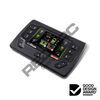
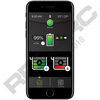
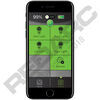
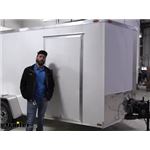
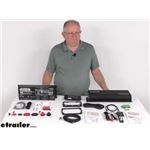
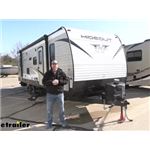
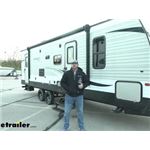
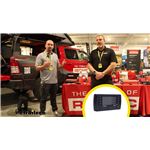





















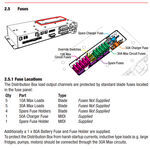
Thank you! Your comment has been submitted successfully. You should be able to view your question/comment here within a few days.
Error submitting comment. Please try again momentarily.